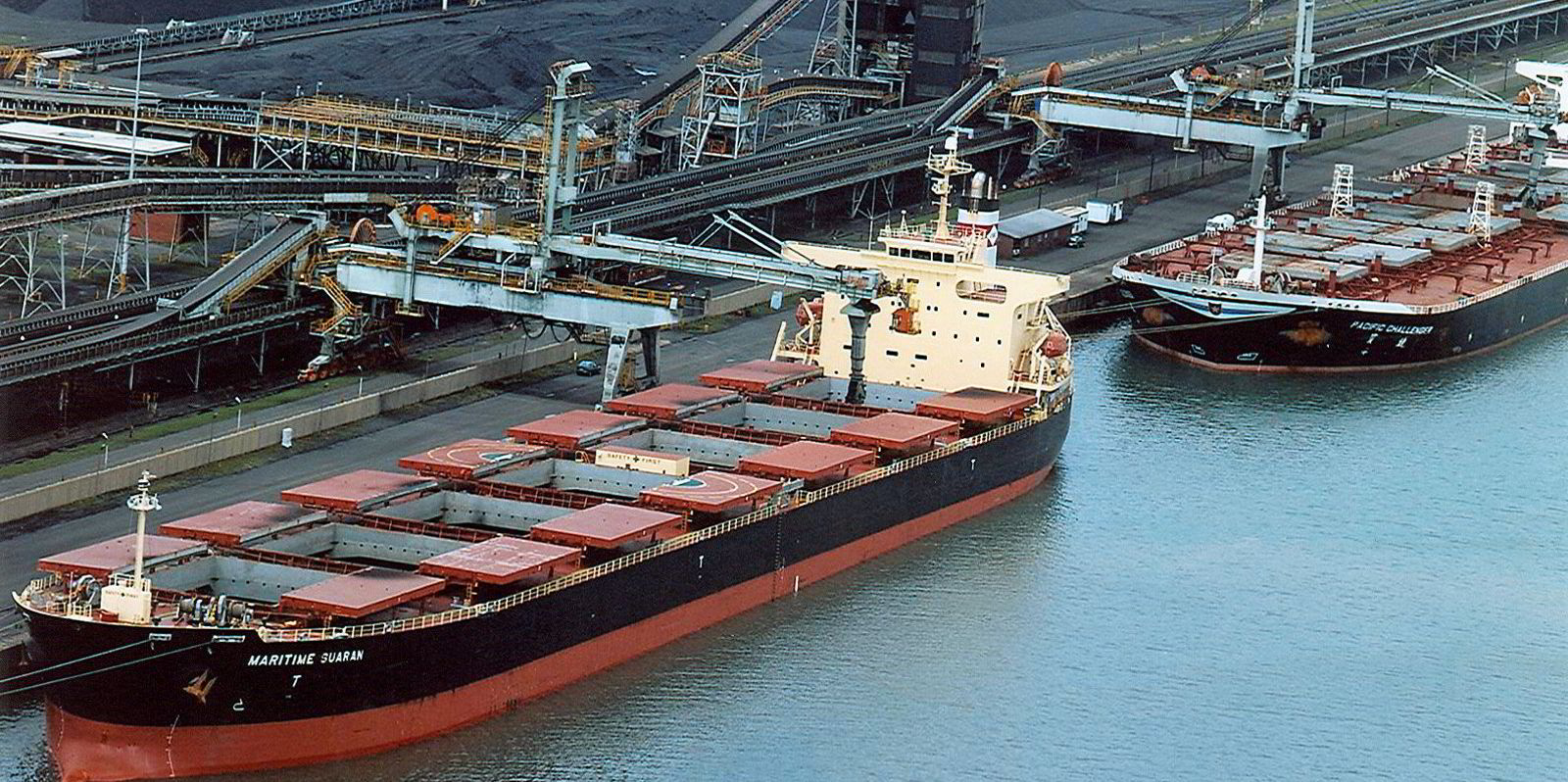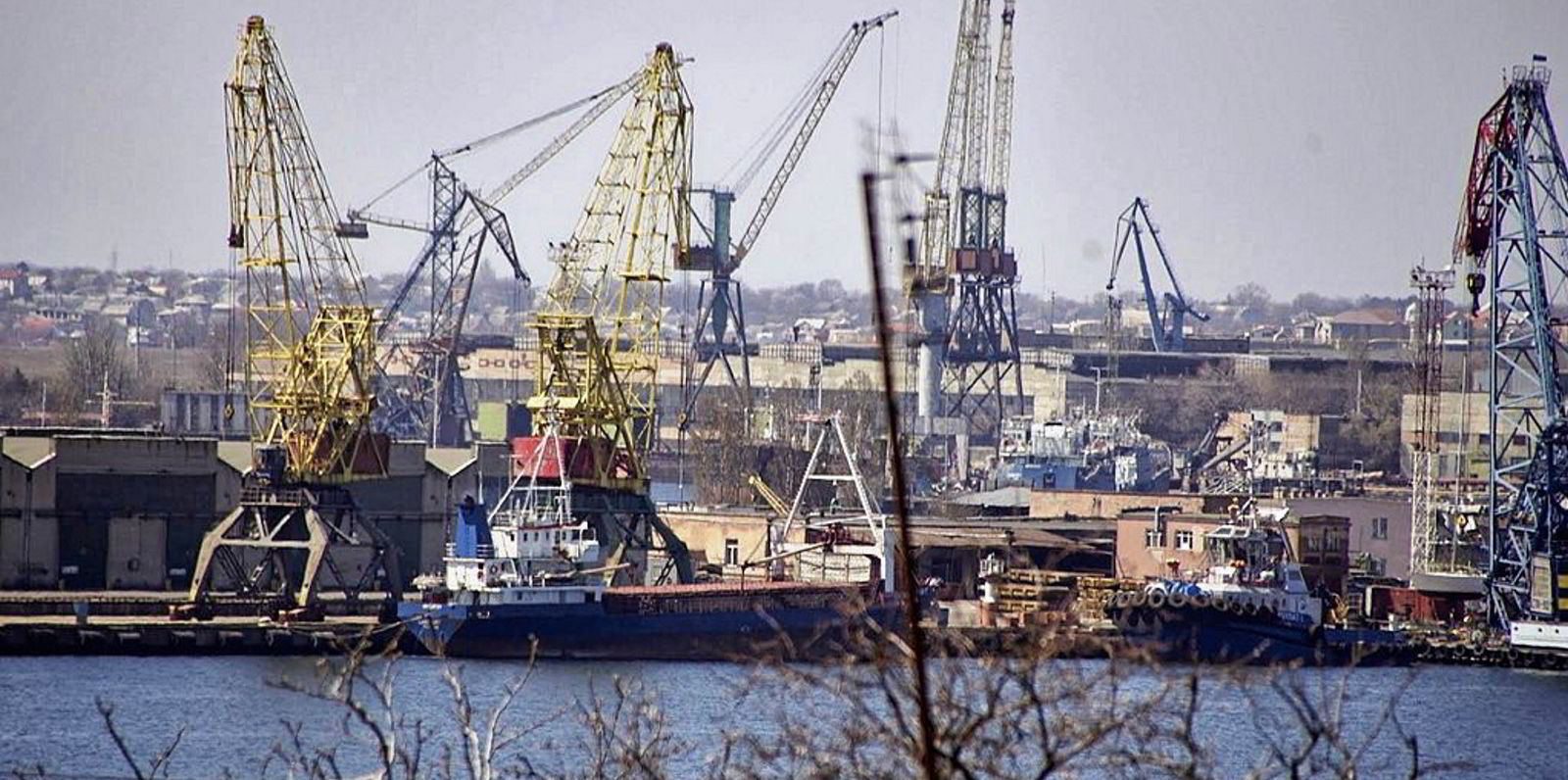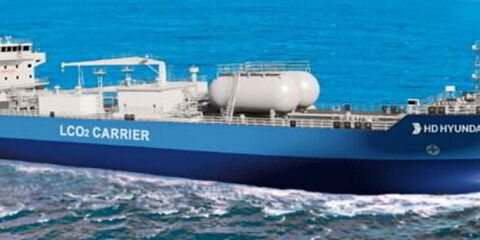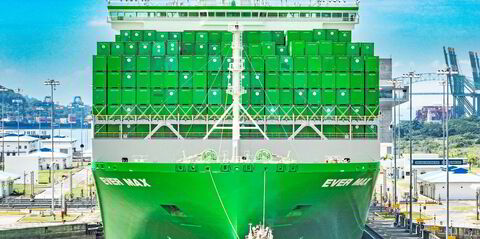The invasion of Ukraine has sent European coal buyers on the hunt further afield for the commodity as they seek to replace Russian volumes.
The moves have brought back the rare trade from South Africa to the continent and even sparked shipments from as far away as Indonesia.
A TradeWinds review of satellite tracking data from VesselsValue shows at least three laden kamsarmax bulkers in the Atlantic whose last port of call was the Richards Bay Coal Terminal in South Africa.
Kuang Ming Shipping’s 82,100-dwt KM Keelung (built 2010), for example, is bound for Brunsbuettel, Germany, after stopping at the coal export facility, where cargoes generally head eastbound to Asia.
Costamare’s 81,500-dwt Farmer (built 2012), meanwhile, has Las Palmas, Spain, as its destination, though it may be a waypoint to its final destination elsewhere.
The Navios Maritime Holdings-controlled, 82,000-dwt Navios Magellan II (built 2020) is bound to Montoir, France, after stopping at the Richards Bay Coal Terminal.
While the terminal is not listed by name on any of the ships’ destination information in Automatic Information System data, the vessels’ track put them at the coal docks rather than other dry bulk export terminals across Richards Bay.
Last year, the terminal pushed out 58.7m tonnes of coal but the vast majority of it went to Asia, with just 4% bound for Europe.
But European coal buyers have shown a willingness to reach farther into export markets.
On Friday, Eagle Bulk Shipping chief executive Gary Vogel said his company, which owns supramax and ultramax bulkers, shipped two cargoes of coal to Europe from Indonesia in fixtures that had a time-charter equivalent rate of $32,000 per day.
A first for Eagle Bulk
“This is the first time the company has ever moved coal from Southeast Asia to the Continent on what is a very long tonne-mile trade,” Vogel told analysts in a conference call.
That vessel demand draw from Europe, he said, is helping to put pressure on the market in the Far East, pushing rates upward there.
In addition to impacting access to Russian coal, the conflict in Ukraine has put more pressure on Europe’s efforts to back away from the carbon-intense commodity in its electricity generation, as gas prices spike.
Braemar ACM Shipbroking said on Tuesday that it may not be profitable for power plants to switch from gas to coal before April 2024 — a year later than estimates from before the invasion.
“The gas supply crunch experienced by Europe this winter has been compounded by Russia’s invasion of Ukraine, in which sanctions may hamper Russian gas exports to Europe,” the shipbroker said.
Braemar ACM previously suggested that sanctions on Russia could send European buyers further afield for both coal and grain.
In the panamax and kamsarmax market, the was in an upward trajectory on Friday after events in Ukraine led the market to stumble early in the week, as ships in the Black Sea or East Mediterranean had to hunt for new employment.
But strength in the Asia market, including the demand to move Indonesian coal, helped push average time-charter equivalent rates for 82,000-dwt vessels to above $25,000 per day on Friday, the highest level since 10 January.





